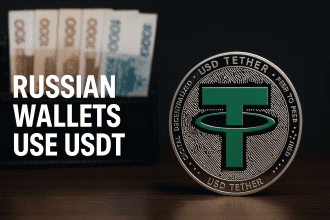Tokenized Stocks Are Pushing Wall Street Into a 24/7, Wallet-First Future: Tokenized stocks are blockchain-based representations of traditional equities, typically backed 1:1 by real shares held with a regulated custodian. By living in crypto wallets rather than broker silos, these assets trade continuously weekends and holidays included while settling near-instantly onchain. This “wallets, not brokers” shift unbundles the legacy brokerage stack (routing, clearing, settlement) into programmable building blocks, giving investors self-custody, global access, fractional ownership, and the ability to use equity exposure as collateral across DeFi.
Under the hood, issuers mint tokens against custodied shares, maintain price parity via redemption mechanisms, and integrate with exchanges and wallets for distribution. Onchain market structure spans order books, AMMs, and hybrid venues; arbitrage, proof-of-collateral, and transparent corporate-action playbooks (splits, dividends, voting) are crucial to maintain trust. Continuous trading improves real time price discovery and enables round the clock portfolio management rebalancing among stablecoins, tokenized Treasuries, and tokenized equities while collapsing settlement timelines from T+2 to “T+now,” reducing counterparty risk and freeing capital earlier.
The biggest tailwinds are composability and UX: a tokenized share can be traded, lent, staked, or automated via smart contracts straight from a wallet interface. This unlocks strategies traditional broker apps can’t natively support. Early platforms focus on non-U.S. markets amid evolving regulation, reflecting a patchwork of licensing, KYC/AML, and securities rules. Liquidity remains uneven and geo-fenced, so credible projects emphasize attestations, redemption clarity, market-maker programs, and robust halt rules. As tokenized cash and Treasuries scale, institutional financing and weekend settlement norms provide infrastructure for equities to follow.
In practice, users should favor reputable issuers with public audits, understand regional access limits, start with liquid names/ETFs, prepare for after-hours volatility, and use leverage prudently. The direction is clear: wallets become the primary gateway to equities, tokens become programmable wrappers for legacy assets, and markets adopt internet speed operating hours. In short, code is resetting Wall Street’s clock, and the wallet in your pocket is evolving into your always on prime broker.






















